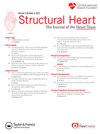Role of Ultrasound-Based Therapies in Cardiovascular Diseases
IF 1.4
Q3 CARDIAC & CARDIOVASCULAR SYSTEMS
引用次数: 0
Abstract
Cardiovascular diseases (CVDs) remain the leading cause of morbidity and mortality globally, placing an immense burden on health care costs worldwide. The emergence of therapeutic ultrasound-based therapies in the CVD management represents a promising innovative strategy beyond current established approaches. This paper explores three distinct modalities of ultrasound-based therapies—high-intensity focused ultrasound, extracorporeal shock wave therapy, and low-intensity pulsed ultrasound—each characterized by unique acoustic parameters and mechanisms of action tailored to specific therapeutic outcomes. High-intensity focused ultrasound was shown to be beneficial as an adjunct in the treatment of myocardial infarction and arrhythmias. It has also been investigated for the in vivo treatment of resistant hypertension, symptomatic aortic valve stenosis, arterial stenosis, tumors, hypertrophic cardiomyopathy, and external cardiac pacing. Extracorporeal shock wave therapy was shown to be beneficial in the treatment of chronic refractory angina pectoris, while low-intensity pulsed ultrasound was shown to be beneficial in dissolving blood clots and improving blood flow in the treatment of acute pulmonary embolism, despite its association with an increased risk of bleeding. Ultrasound-based therapies are, therefore, a potential adjunct and comparatively safe adjuncts for managing challenging CVD cases. Further investigations are essential to validate their long-term effectiveness and safety, particularly for high-risk individuals susceptible to postprocedural complications.
超声疗法在心血管疾病中的作用
心血管疾病(cvd)仍然是全球发病率和死亡率的主要原因,给世界各地的卫生保健费用造成巨大负担。超声治疗在心血管疾病管理中的出现代表了一种超越现有方法的有前途的创新策略。本文探讨了三种不同的超声治疗模式——高强度聚焦超声、体外冲击波治疗和低强度脉冲超声——每一种都有独特的声学参数和针对特定治疗结果的作用机制。高强度聚焦超声被证明是有益的辅助治疗心肌梗死和心律失常。它也被研究用于体内治疗顽固性高血压、症状性主动脉瓣狭窄、动脉狭窄、肿瘤、肥厚性心肌病和心脏外起搏。体外冲击波治疗在治疗慢性难治性心绞痛中被证明是有益的,而低强度脉冲超声被证明在治疗急性肺栓塞时有利于溶解血凝块和改善血流量,尽管它与出血风险增加有关。因此,基于超声的治疗是一种潜在的辅助手段,而且相对安全,可用于治疗具有挑战性的CVD病例。进一步的调查是必要的,以验证其长期有效性和安全性,特别是对高危人群易患术后并发症。
本文章由计算机程序翻译,如有差异,请以英文原文为准。
求助全文
约1分钟内获得全文
求助全文
来源期刊

Structural Heart
Medicine-Cardiology and Cardiovascular Medicine
CiteScore
1.60
自引率
0.00%
发文量
81
 求助内容:
求助内容: 应助结果提醒方式:
应助结果提醒方式:


